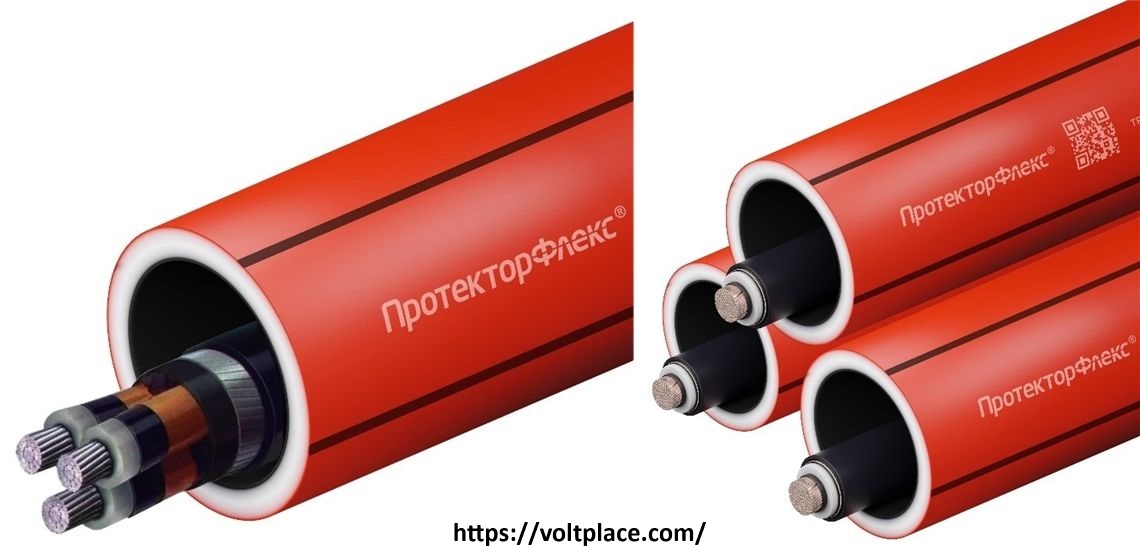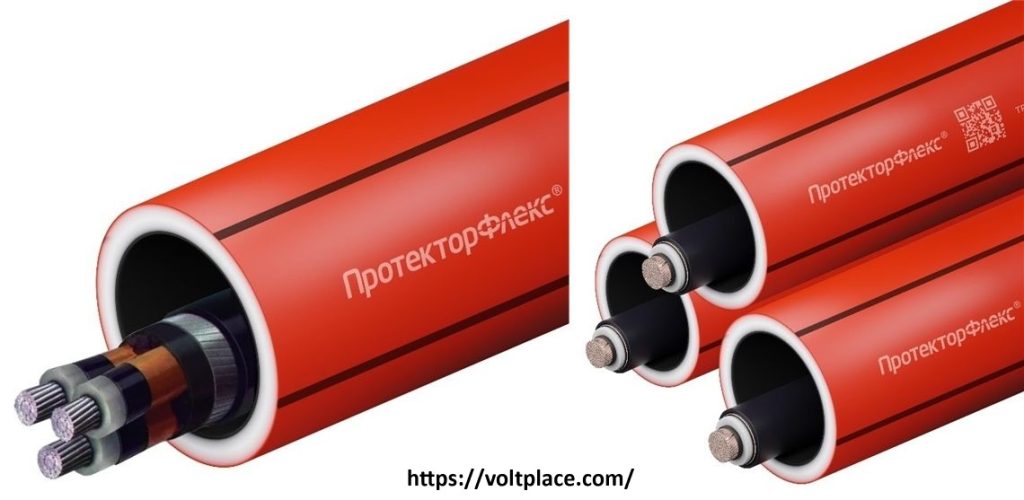
Laying cables in pipes (part 1)

Laying cables in pipes is a common way of laying high-voltage cable lines. Usually, pipes are accounted for using a correction factor K=0.9, that is, it is assumed that laying cables in pipes reduces the permissible current by 10%. For example, if the cable line in the ground had a permissible current of 1000 A, then after laying in the pipes it will become 1000*0.9 = 900 A.
In fact, the influence of pipes on the long-term permissible current of cable lines is diverse, and it cannot be described by introducing a universal correction factor K=0.9. In many cases, laying cables in pipes not only does not reduce the permissible current, but even, on the contrary, increases it. Why is it that the old 0.9 coefficient is no longer correct?
The factor K=0.9, which takes into account the influence of pipes on the permissible current, first appeared in regulatory documents at a time when cable networks had the following three features.
1. All three phases of the cable line were placed simultaneously in the same pipe (photo from the left).
2. The pipes were laid in an open way on the bottom of the trench at a depth of no more than 1.5 m, since other methods were little known (in particular, there was no horizontal directional drilling HDD, when the depth can be up to 20 m).
3. The pipes were mainly made of asbestos, which in fact was a heat insulator and had a significant specific thermal resistance, reaching a value of 10 m*K/Wt.
The coefficient K=0.9 quite correctly described the influence of pipes on the permissible current of old-type cable lines, however, this coefficient does not take into account at all that three significant changes have occurred in cable networks over the past 20 years.
1. Single-core cables have appeared, and each phase is placed in its own separate pipe (photo from the right).
2. Pipes were often laid using the HDD method at a great depth (up to 20 m), which led to an increase in the thermal resistance of the soil, that affected the conditions for heat removal from cables.
3. Modern polymer pipes have a thermal resistance of about 3.5 m*K/Wt, and pipes from leading manufacturers have a resistance of 2 m*K/Wt, which is 5 times less than asbestos pipes.
These factors have led to the fact that the old familiar coefficient 0.9 no longer works. In the next publication, we will explain that for modern cable lines, phase-by-phase laying in pipes not only does not reduce the permissible current by 10%, but on the contrary increases it by 5-15%. For example, if the cable line in the ground had a permissible current of 1000 A, then after phase-by-phase laying in three pipes it can become up to 1000*1.15 =1150 A.
If You have new coefficient 1.15 instead of old 0.9 then it means the 25% mistake when selecting cable line core cross-section. It’s huge mistake ignored by cable line manufacturers in order to sell to you the big core cross-section instead of small one.
To be continued
